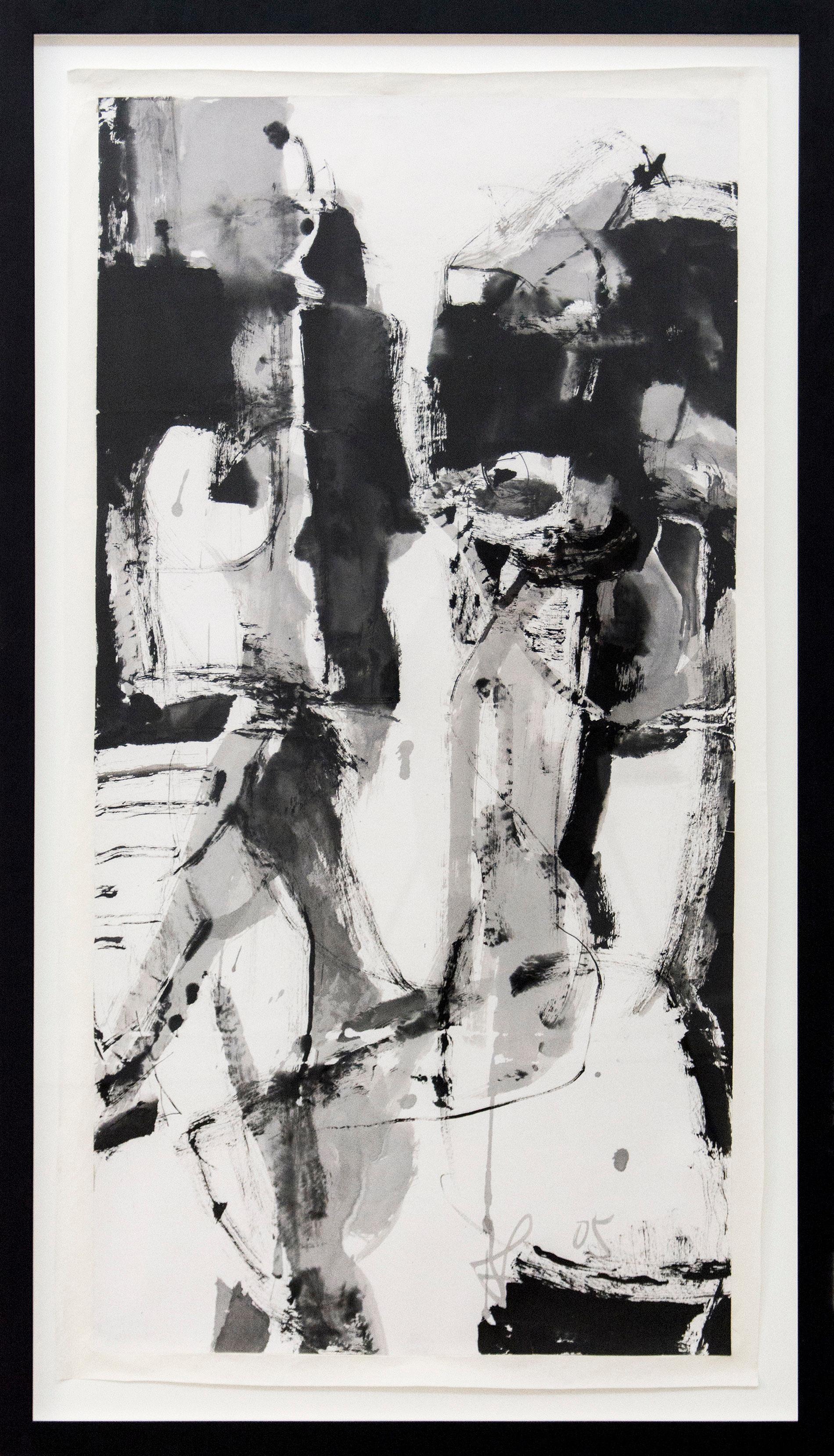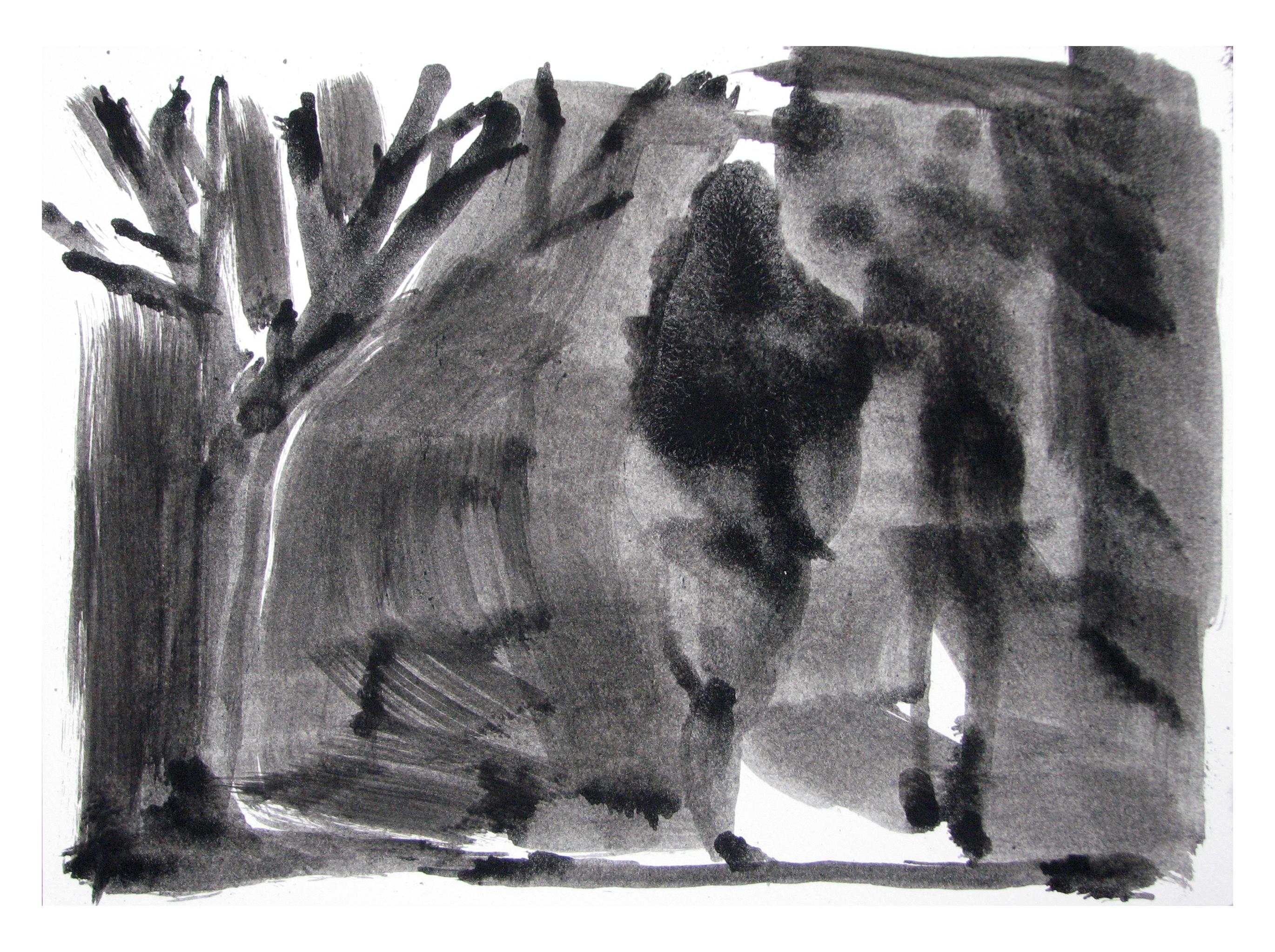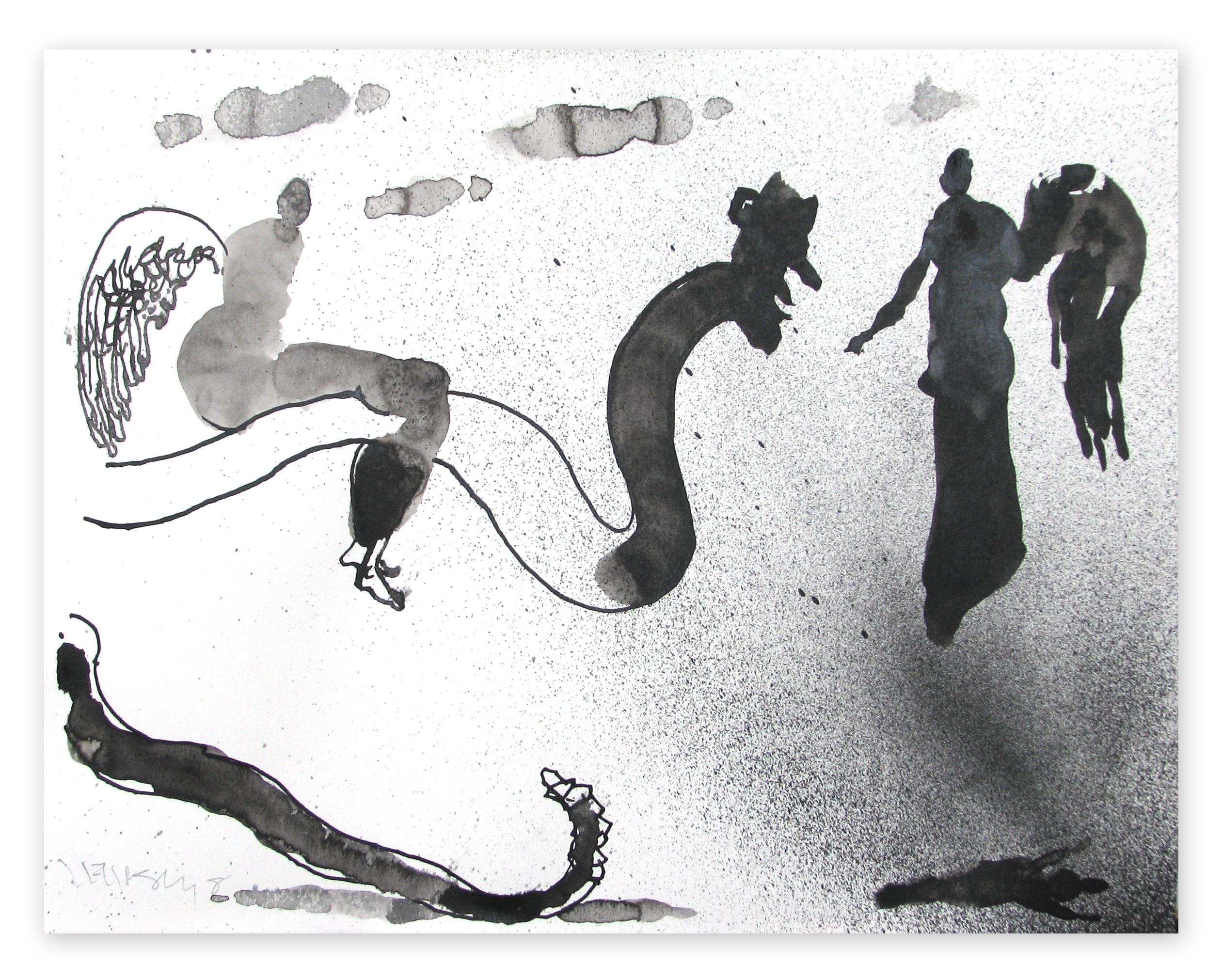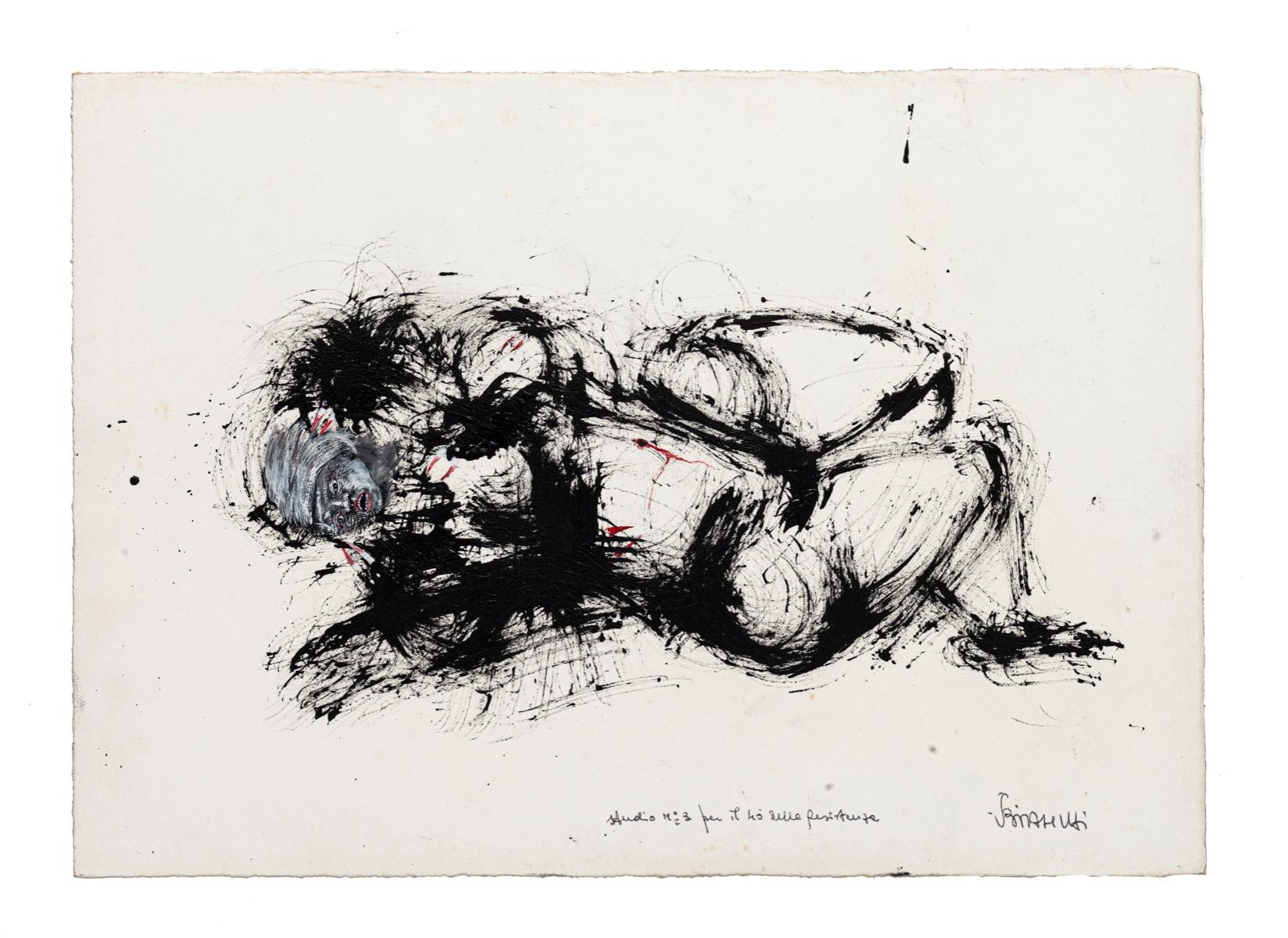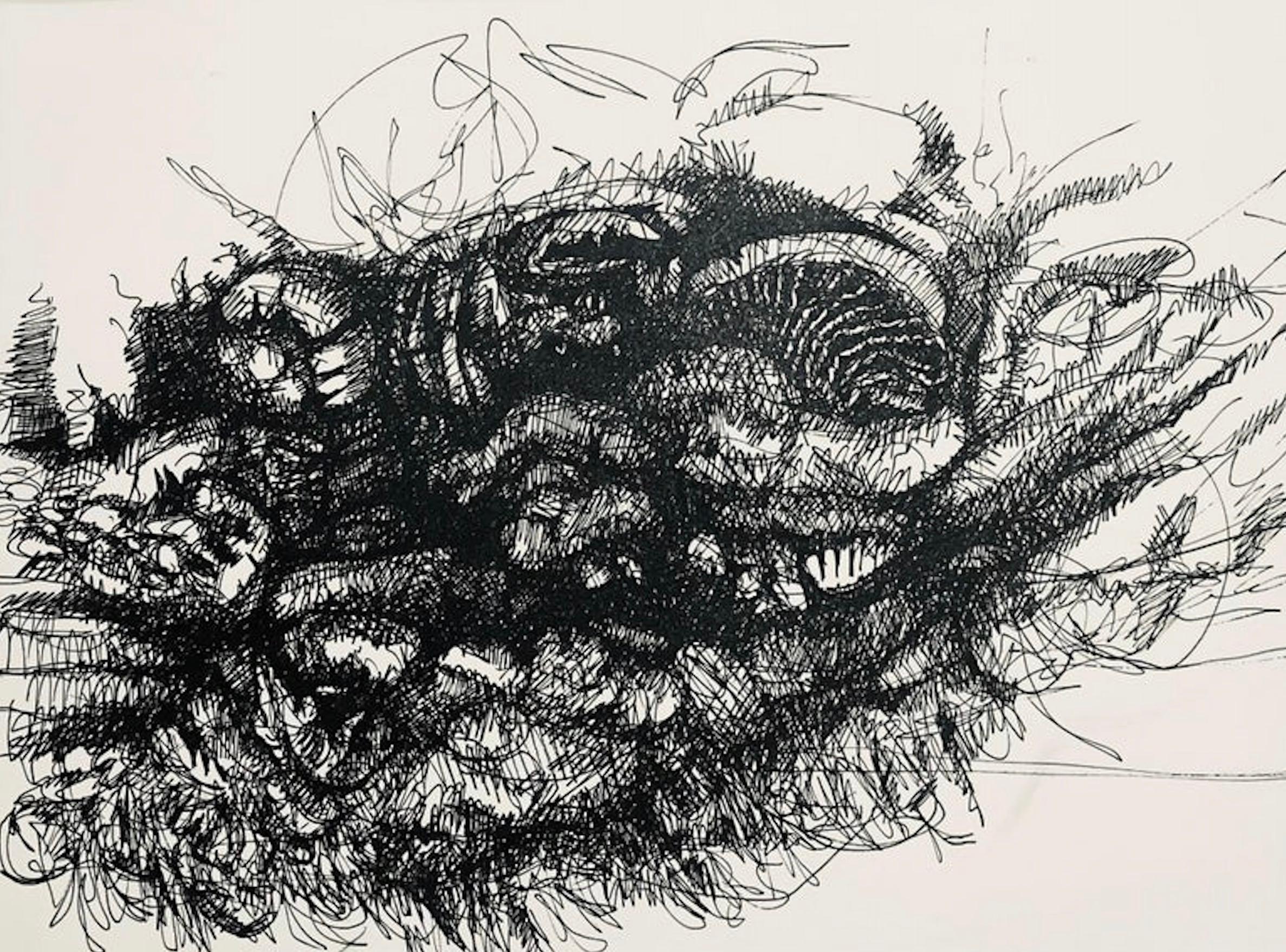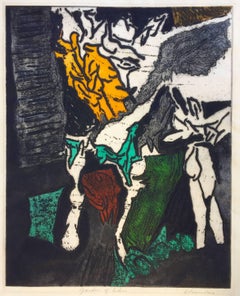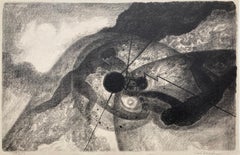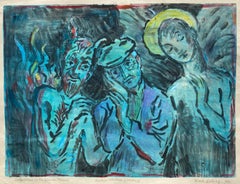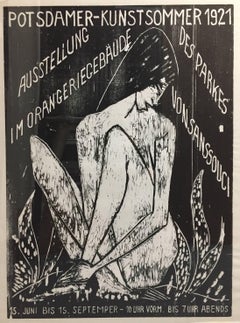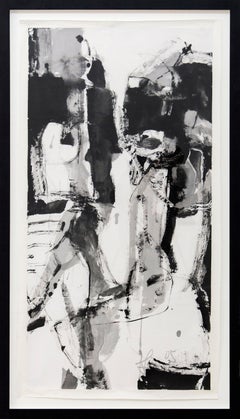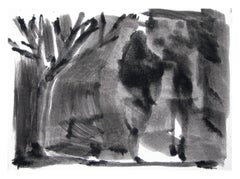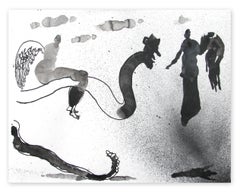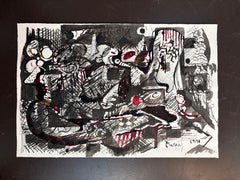Items Similar to DEBRIS - Large Ink Drawing - Study for the Print
Want more images or videos?
Request additional images or videos from the seller
1 of 9
Edward HagedornDEBRIS - Large Ink Drawing - Study for the Printca. 1930
ca. 1930
Price Upon Request
Price Upon Request
Price Upon Request
Price Upon Request
Price Upon Request
Price Upon Request
Price Upon Request
Price Upon Request
Price Upon Request
Price Upon Request
About the Item
EDWARD HAGEDORN (AMERICAN 1902 – 1982)
DEBRIS, ca. 1930 Large Ink Drawing - Study for the Print.
Image 16 1/2 x 22 1/2 inches, sheet 17 1/2 x 28 inches. Ink wash, on blank side of slick advertising paper. See photos of verso. See also 1srdibs # LU411312750272
Provenance: Hagedorn estate, Around the mid 1980's The Hagedorn estate was dispersed in Berkeley by a local dealer. This drawing was part of a group of Hagedorn works on paper that I acquired from that dispersal. Much of the balance was later acquired the Struart Denenberg Fine Art.
Denenberg published a very fine book on the artist's work.
EDWARD HAGEDORN: CALIFORNIA MODERNIST, RESTLESSNESS AND RESTRAINT Hardcover – January 1, 2009
Subsequently Hagedorn's works on paper have been acquired by many museums and some accompanying exhibitions.
ALL OF THE COMMENTS BELOW ARE FROM THE FOLLOWING EXHIBITION
EDWARD HAGEDORN (1902-1982)
American Modernist
A New Traveling Exhibition
“VOLCANOS, WRECKS, RIOTS, & NUDES”, EDWARD HAGEDORN (1902-1982)
premiere at the Danforth Museum. Framingham, MA, in March 2016. The exhibition includes 75 works of art in various mediums and is accompanied by the first monograph devoted to the artist’s work with essays by leading curators, critics, and art historians.
Edward Hagedorn was a true Modernist who created a trove of powerful works on paper--drawings, watercolors, oils, and original graphics that reveal the hand of a master draftsman and the mind of an astute political observer. He rejected the general trend in early 20th century California of local landscapes and coastal views, becoming virtually the single voice of Expressionism. He conveyed the darkness and upheaval that gripped the country in the depression years between the two World Wars, 1925- 1935, more forcefully than any of his contemporaries, influenced by German art of the time, engaging in modernist styles of Expressionism and Surrealism.
Hagedorn’s skeletons are ferocious yet somehow endearing; printed in deep black ink on off-white paper, they march across Lilliputian landscapes of grim disorder and destruction. Comets and volcanoes explode in fauvist colors, their other-worldly fluorescent temperas framed in black, while nude female figures, executed in exquisitely refined pen and ink, or graphite line drawings, are as economical in their means as Matisse, and can be compared with the neo-classical drawings of Picasso. Among his most lyrical works of the 1920s is a series of rhythmically abstracted watercolor and ink views of Golden Gate Park, evoking the sensual demi-geometries of Balthus, Derain , and early Mondrian.
American Modernist Edward Hagedorn (1902-1982) was born in San Francisco of German descent; his mother (née Kafka) died in childbirth, and he was legally adopted and raised by his grandmother and aunt. After attendance at the San Francisco School of Fine Arts in the early 1920s, by age 22 he had a studio in the famed "100" block of Montgomery Street ("the Monkey Block,") then a haven for bohemians.
In 1926, a year of tremendous importance in California artists' embrace of modern art, the Oakland Art Gallery, with the guidance and inspiration of their European representative Emmy (Galka) Scheyer, was the first museum in the United States to show the art of the "Blue Four," among the leading artists of International Modernism--Paul Klee, Lyonel Feininger, Alexei Jawlensky, and Wassily Kandinsky.
The overwhelming influences in Scheyer's exhibitions in Oakland and later in Pasadena, were German art movements. She appreciated the abstractionist teaching of Hans Hoffman, who later taught at the University of California, Berkeley, and his Munich students, as well as the increasing importance of Bauhaus, Dada, and Surrealist aesthetics. Hagedorn, of German extraction, was drawn to these influences. Scheyer offered to represent his work, inviting the young artist to become the fifth member of her distinguished group. He rejected her overtures. Scheyer's group of Hagedorn drawings was left to the the Norton Simon Museum, together with her important collection of works by the Blue Four, and major examples by Dix, Kirchner, Kokoschka, Leger, Lissitsky, Nolde, Schwitters, Schlemmer, and Picasso.
"Ed was an outsider, a loner, a tall thin man who walked down the street looking like a question-mark; he had no use for success," according to fellow artist Paul Carey. Financially independent from the 1930's on, having inherited a sizable income from his maternal family's insurance agency, Hagedorn made little effort to market his art, but continued to work prodigiously in the seclusion of his studio/residence in Berkeley, and was active in bohemian North Beach, San Francisco, a friend and illustrator of writer Kenneth Rexroth and poet Czeslaw Milosz.
Oakland Museum Director William Clapp was intellectually open to the entire spectrum of modernism, and in 1927 included Hagedorn's painting of a female nude wearing nothing but silk stockings. It created a scandal reminiscent of the first exhibition of Courbet's 1866 oil, "Origin of the World," or recently Robert Mapplethorpe's explicit photographs. Then critic for The Chronicle, Gene Hailey, together with a "lady's committee" demanded the painting's withdrawal in newspaper articles and in letters to Director Clapp who steadfastly supported freedom of expression. Despite attempts at censorship and disinheritance by his wealthy father, Hagedorn persisted in his convictions, and refused to withdraw the work; he continued to depict the female nude throughout his long life.
Edward Hagedorn achieved critical national acclaim exhibiting widely, and winning print competitions at the De Young Museum, the Brooklyn Museum, and the Pennsylvania Academy of Fine Art, participating as well in the Works Progress Administration (the WPA.) In the 1960s, eminent San Francisco Chronicle critic Alfred Frankenstein stated, "Hagedorn is one of the finest draughtsman I ever knew."
Some public collections holding Hagedorn's work include the Norton Simon Museum; Chicago Art Institute; National Museum of American Art, Achenbach Foundation for Graphic Art, San Francisco; Carnegie Art Institute, the Huntington Museum; Oakland Museum of Art; the National Museum of American Art, Smithsonian Instituion; Library of Congress; Whitney Museum of American Art; Getty Center; and the Fitzwilliam Museum, Cambridge, England.
Edward Hagedorn's art is a major discovery in American Modernism. He conveyed more forcefully than most of his contemporaries the darkness and upheaval that gripped the country in the years between the two World Wars and during the Great Depression. This exhibition reveals the hand of a master draftsman and the mind of an astute political observer who rejected bucolic landscapes.
Hagedorn’s images insist on eidetic registration: skeletons, ferocious yet somehow endearing, printed in dark black ink on off-white paper, marching across Lilliputian landscapes of grim disorder and destruction; comets and volcanoes exploding in other-worldly colors, their fluorescent temperas framed in thick black outline; nude female figures in exquisitely refined pen and ink or graphite line drawings, as economical in their means as Matisse or the neo-classical drawings of Picasso occasionally splashed with watercolor or pastel reminiscent of Schiele. He also created lyrical landscapes, Surrealist experiments, and homages to the female form in a compelling decades-long production of watercolors, pastels, ink, monotypes, etchings, lithographs, and relief prints. This first retrospective of the art of Edward Hagedorn reveals an artist powerfully in command of marks on paper, wryly observant of human folly; he was a gifted draftsman who created indelible images and unforgettable impressions of the most powerful forces of nature.
When Hagedorn died intestate in 1982, the bulk of his life's work was discovered in the Woolsey Street attic in dozens of boxes filled with hundreds of prints, watercolors, temperas, and drawings. Heir-finder attorneys settled a million dollars in cash and securities on a distant relative the artist had never met.
EDWARD HAGEDORN
Selected Quotes
This first retrospective of the art of Edward Hagedorn (American 1902-1982), reveals an artist powerfully in command of marks on paper, wryly observant of human folly, a gifted draftsman creating indelible images and unforgettable impressions of the most powerful forces of nature.
-Robert Flynn Johnson, Curator Emeritus, Achenbach Foundation For Graphic Arts, Fine Arts Museums of San Francisco
“….Hagedorn’s diversity…. can be described on a second level, that of the imaginative wealth of his imagery in the service of a profound, often neurotic, and politically astute content. Based in the violent and repressive politics of the 1930’s and 1940’s, the best of these images engage with European Expressionism without blindly following the style’s tenets, nor succumbing to the ironic detachment of the Neo- Expressionists of the 1980’s. Instead, Hagedorn’s images remain engaged, powerful, even forbidding.… ...Their monumentalizing quality is direct and arresting, and continues to feel surprisingly contemporary.
Dr. James Steward, Director of the Princeton University Museum, former Director of the University Museum, Berkeley--©The Regents of the University of California, courtesy Berkeley Art Museum,1996
“…..a sensibility of great formal inventiveness and fierce, almost unhinged, moral concern. In an era when artists had to assert themselves increasingly to get noticed, particularly on the West Coast, Hagedorn kept to himself. ….nudes in tempera on paper… are rendered with a bold, big-fisted simplicity that suggests a middle path between Alexei Jawlensky and Fernand Léger. “
Kenneth Baker, San Francisco Chronicle, July 10, 1996
"Hagedorn’s mystical landscape visions, closer to the expressionism of Germans such as Oskar Kokoschka and Emil Nolde than to the formalist constructs of Hans Hofmann, had a place in both worlds, the realms of the abstract painter and of the social critic. With a highly personal, idiosyncratic language, he managed to convey the darkness and upheaval that gripped San Francisco in the depression years more forcefully than any of his contemporaries."
Dr. Patricia Junker, Ann M. Barwick Curator of American Art, Seattle Art Museum; former Curator, Amon Carter Museum of Art; former Associate Curator, American Painting, De young Memorial Art Museum, San Francisco, 2009
"That Hagedorn is able to communicate terror and the terrible in the absence of impassioned or hysterical brushwork makes his take on Expressionism unique indeed – that which is most compelling in Hagedorn’s work – the restlessness and the restraint.”
Susan Kandel, Los Angeles Times, March 5, 1992
"The power of Hagedorn’s anti-war series derives from dramatic visual presence often rendered in stark black and white, his skeletons throwing grenades, sounding a trumpet, and sowing dragon’s-seed bayonets which sprout as soldiers. These all-too-human figures have a life of their own, including the revelation of their mortality as stripped flesh; they draw us back to the immediate and fresh experience of the graphic image, and that is where Hagedorn concentrated his powers as an artist."
DIckran Tashjian, Professor Emeritus of Art History, School of Humanities, University of California--Irvine, 2009
“Edward Hagedorn’s images proclaim their importance through their intrinsic graphic power and their bold simplicity. When I first encountered the work several years ago, I found it difficult to believe that such an achievement had, apparently, gone unremarked in studies of California modernist art—the subject of a book I was preparing. So there was, and still is, the excitement of discovery attached to the work of Edward Hagedorn."
Dr. Paul Karlstrom, former West Coast Director, Archives of American Art, Smithsonian Institution, 2009
- Creator:Edward Hagedorn (1902 - 1982, American)
- Creation Year:ca. 1930
- Dimensions:Height: 16.5 in (41.91 cm)Width: 22.5 in (57.15 cm)
- Medium:
- Movement & Style:
- Period:
- Condition:
- Gallery Location:Santa Monica, CA
- Reference Number:1stDibs: LU411312750452
About the Seller
5.0
Recognized Seller
These prestigious sellers are industry leaders and represent the highest echelon for item quality and design.
Gold Seller
Premium sellers maintaining a 4.3+ rating and 24-hour response times
Established in 1977
1stDibs seller since 2016
294 sales on 1stDibs
Typical response time: 1 hour
Associations
International Fine Print Dealers Association
- ShippingRetrieving quote...Shipping from: Santa Monica, CA
- Return Policy
Authenticity Guarantee
In the unlikely event there’s an issue with an item’s authenticity, contact us within 1 year for a full refund. DetailsMoney-Back Guarantee
If your item is not as described, is damaged in transit, or does not arrive, contact us within 7 days for a full refund. Details24-Hour Cancellation
You have a 24-hour grace period in which to reconsider your purchase, with no questions asked.Vetted Professional Sellers
Our world-class sellers must adhere to strict standards for service and quality, maintaining the integrity of our listings.Price-Match Guarantee
If you find that a seller listed the same item for a lower price elsewhere, we’ll match it.Trusted Global Delivery
Our best-in-class carrier network provides specialized shipping options worldwide, including custom delivery.More From This Seller
View AllGarden of Eden
By Leonard Edmondson
Located in Santa Monica, CA
LEONARD EDMONDSON (1906 – 2001)
GARDEN OF EDEN c. 1960
Color intaglio (carborundum?) Signed and titled in pencil. Small edition, these larger prints...
Category
1960s Abstract Expressionist Abstract Prints
Materials
Intaglio
$750 Sale Price
37% Off
ORBITS - Large Hoeckner lithograph
By Carl Hoeckner
Located in Santa Monica, CA
CARL HOECKNER (1883 – 1972)
ORBITS, c. 1935
Lithograph, edition unknown but small. Image 11 3/3 \4 x 18 3/8 inches, sheet 12 3/8 x 19. In good condition aside from small margins an...
Category
1930s Surrealist Figurative Prints
Materials
Lithograph
$937 Sale Price
25% Off
SELF PORTRAIT IN A GERMAN MANNER - Large Monotype
By Karl Schrag
Located in Santa Monica, CA
KARL SCHRAG (German - American 1912 - 1995)
SELF PORTRAIT IN THE GERMAN MANNER, 1991
Monotype, Signed titled, dated and annotated "Monotype with touches of Oil color, I /I"
Plate an...
Category
1990s American Modern Figurative Prints
Materials
Monotype
LARGE RARE OTTO MUELLER WOODCUT POSTER
By Otto Mueller
Located in Santa Monica, CA
OTTO MUELLER (German 1874 – 1930)
POTSDAMER KUNSTSOMMER, 1921 (1968) (Karsch 6)
Woodcut. Edition of 25 and numbered 11. There are no known
impressio...
Category
1920s Expressionist Figurative Prints
Materials
Woodcut
A Winter - Seeming Summers Night
By June Wayne
Located in Santa Monica, CA
JUNE WAYNE (1918 - 2011)
A WINTER - SEEMING SUMMER'S NIGHT, 1957 From the John Donne Series. (Conway 122, Basket 106: Gilmour 50)
Lithograph signed, title...
Category
1950s American Modern Figurative Prints
Materials
Lithograph
$1,320 Sale Price
20% Off
VOLCANO
By Edward Hagedorn
Located in Santa Monica, CA
EDWARD HAGEDORN (AMERICAN 1902 – 1982)
VOLCANO c. 1935
Thick tempera, SIGNED at the upper right corner,. Sheet & image 18 1/2 x 25 inches.
Provenance: Hagedorn estate, Around the...
Category
1930s Landscape Drawings and Watercolors
Materials
Tempera
Price Upon Request
You May Also Like
Citation - black, white, abstracted figurative, brushed ink on paper
By Andrew Lui
Located in Bloomfield, ON
Brushed ink in grey and black leads the eye up the picture plane in this 55-inch tall painting on paper. The intense movement suggestive of rearing horses in this painterly work is in keeping with Lui's theme of pilgrimage in which he explores the idea of "self-inflicted happiness" as a deliberate response to the melancholy and complexity of life. This painting is floated and framed. Framed Size: 60 × 35 inches
Born in Guangzhou, China, Lui participated in the Chinese Cultural Revolution as a member of the Red Guard 1968-70 and then escaped to Hong Kong by swimming. Making his way to Toronto he studied at the Ontario College of Art and became a citizen in the late 1970s. He continued studies in the UK, and Italy where he was drawn to the dynamic Uccello's Battle of San Romano...
Category
2010s Contemporary Abstract Drawings and Watercolors
Materials
Ink, Archival Paper
transfer, Drawing, Pen & Ink on Paper
By Edward Zelinsky
Located in Yardley, PA
From a series done after a visit to Lucca, Italy. Done with brush on sturdy Italian watercolor paper. Mostly figurative- many with wings- against a gray brushstroked background depic...
Category
2010s Contemporary Drawings and Watercolor Paintings
Materials
Pen
heresy, Drawing, Pen & Ink on Watercolor Paper
By Edward Zelinsky
Located in Yardley, PA
A Drawing :: Drawing :: Contemporary :: This piece comes with an official certificate of authenticity signed by the artist :: Ready to Hang: No :: Signed: Yes :: Signature Location: ...
Category
Early 2000s Contemporary Drawings and Watercolor Paintings
Materials
Pen
"Etude" by Grégoire Mathias – Ink Drawing on Paper
Located in PÉRIGUEUX, FR
Etude
Crayon, India Ink, Sepia Ink on paper
33 x 49.7 cm
About the artist:
Grégoire Mathias, graduate of ENSBA Paris, is a pioneer of Diachronic Cubism, an evolution of Cubism tha...
Category
21st Century and Contemporary Cubist Abstract Drawings and Watercolors
Materials
Paper, Crayon, India Ink
Study N°3 - Ink Drawing - Late 20th century
Located in Roma, IT
Study N°3 is an original china ink drawing and white lead realized by an unknown artist and signed lower right (barely readable).
This artwork represents a Study N°3 for the 40th A...
Category
Late 20th Century Modern Figurative Drawings and Watercolors
Materials
Ink, Mixed Media
(Abstract Landscape) Untitled, 1965, Ian Hornak — Drawing
By Ian Hornak
Located in Fairfield, CT
Artist: Ian Hornak (1944-2002)
Title: (Abstract Landscape) Untitled
Year: circa 1965
Medium: Charcoal on archival paper
Size: 11 x 14 inches
Condition: Good
Provenance: Estate of Ian...
Category
1960s Photorealist Figurative Drawings and Watercolors
Materials
Charcoal, Archival Paper
$3,080 Sale Price
20% Off
More Ways To Browse
Black And White Line Drawing
Black And White Etchings Drawings
Black And White Drawings Female Nudes
Black And White Two Nude Females
Edward Paul
Used Grenade
Golden Gate Park
Early California Landscape
Robert Flynn
Robert Mapplethorpe Photograph
Midcentury Pen And Ink Nude
Silk Stockings
Vintage Silk Stocking
Paper Cutting Art
Arab Drawing
Ballerina Drawing
Costume Design Watercolor
Jean Louis Ernest Meissonier
